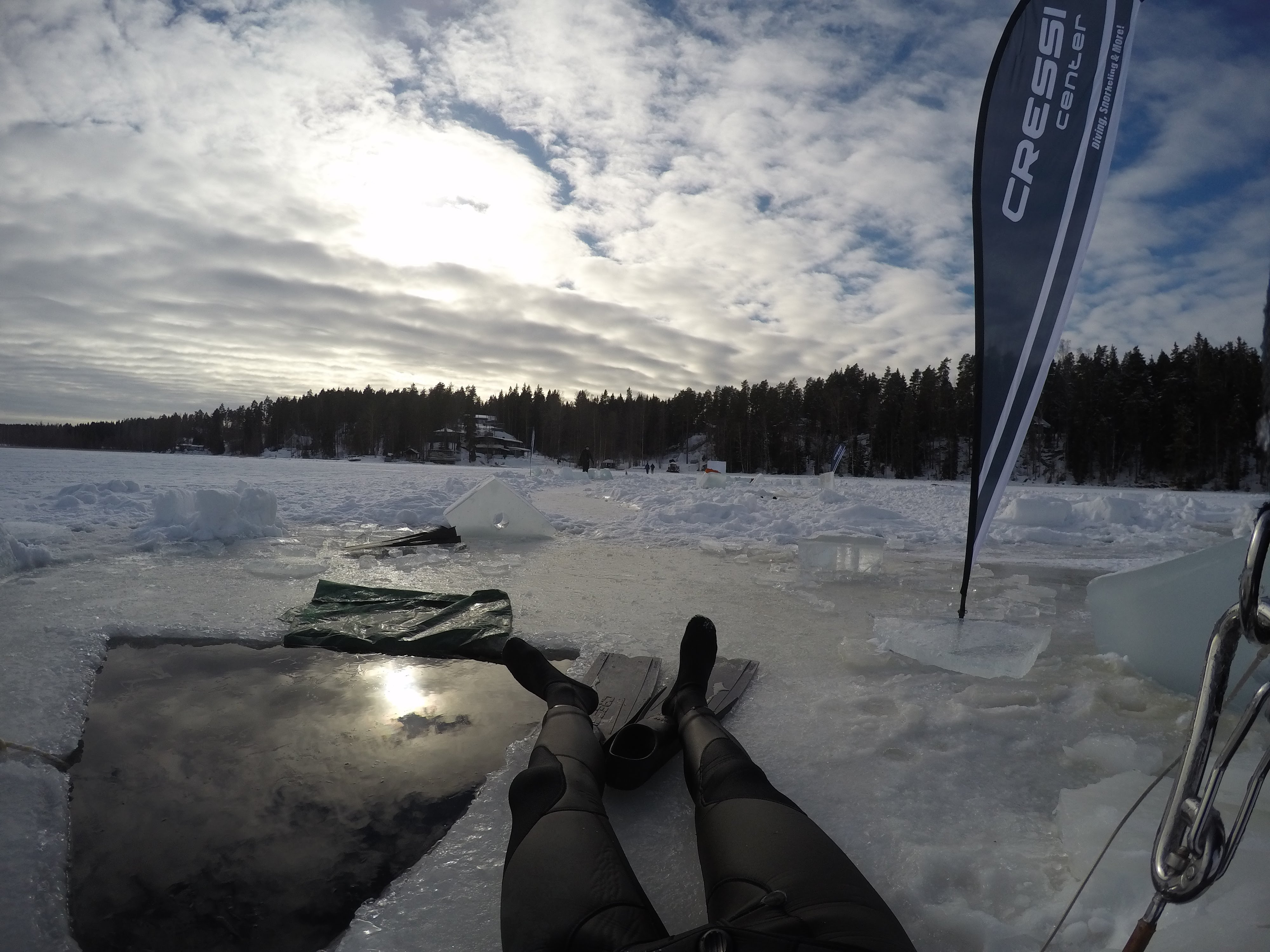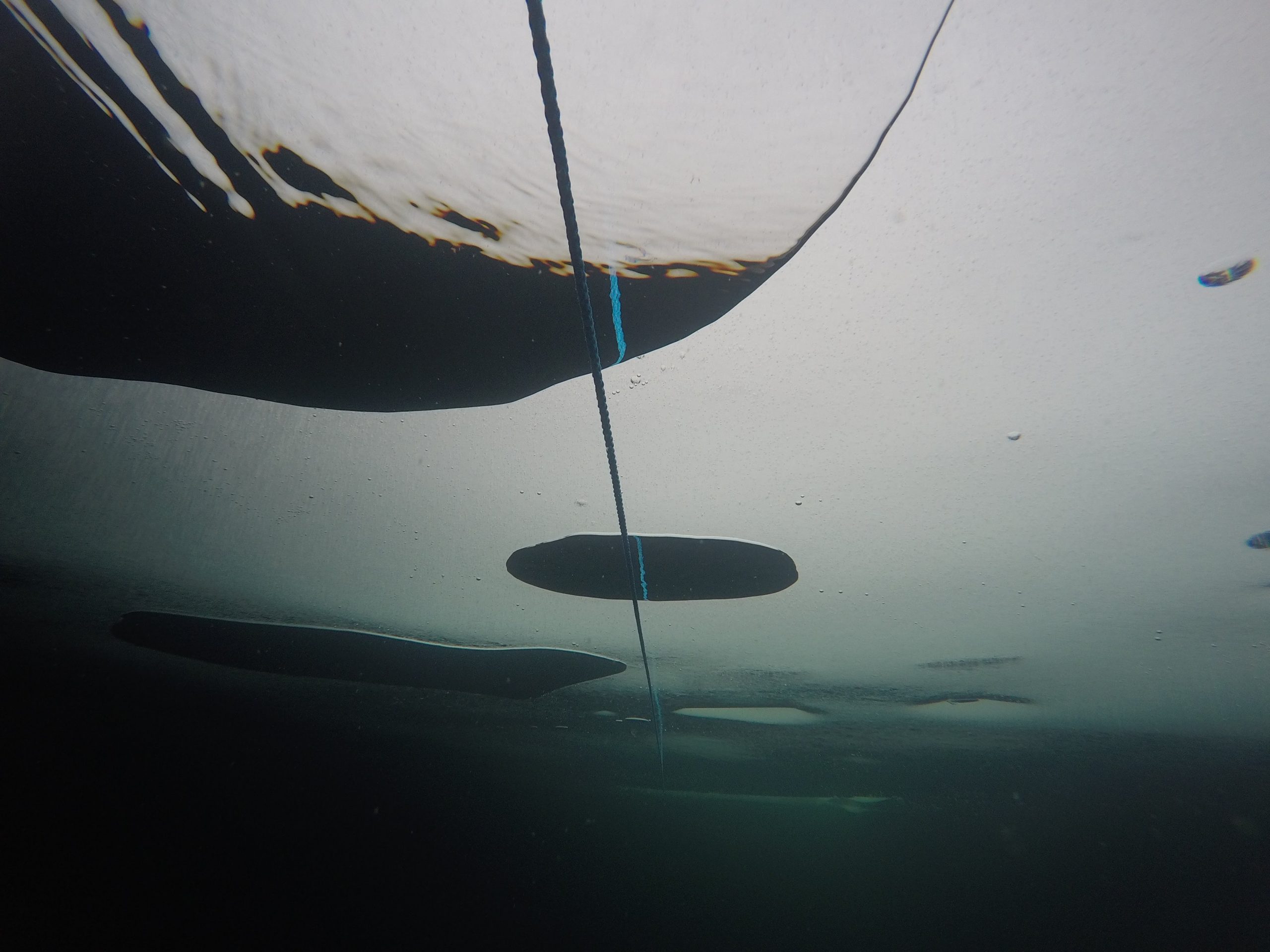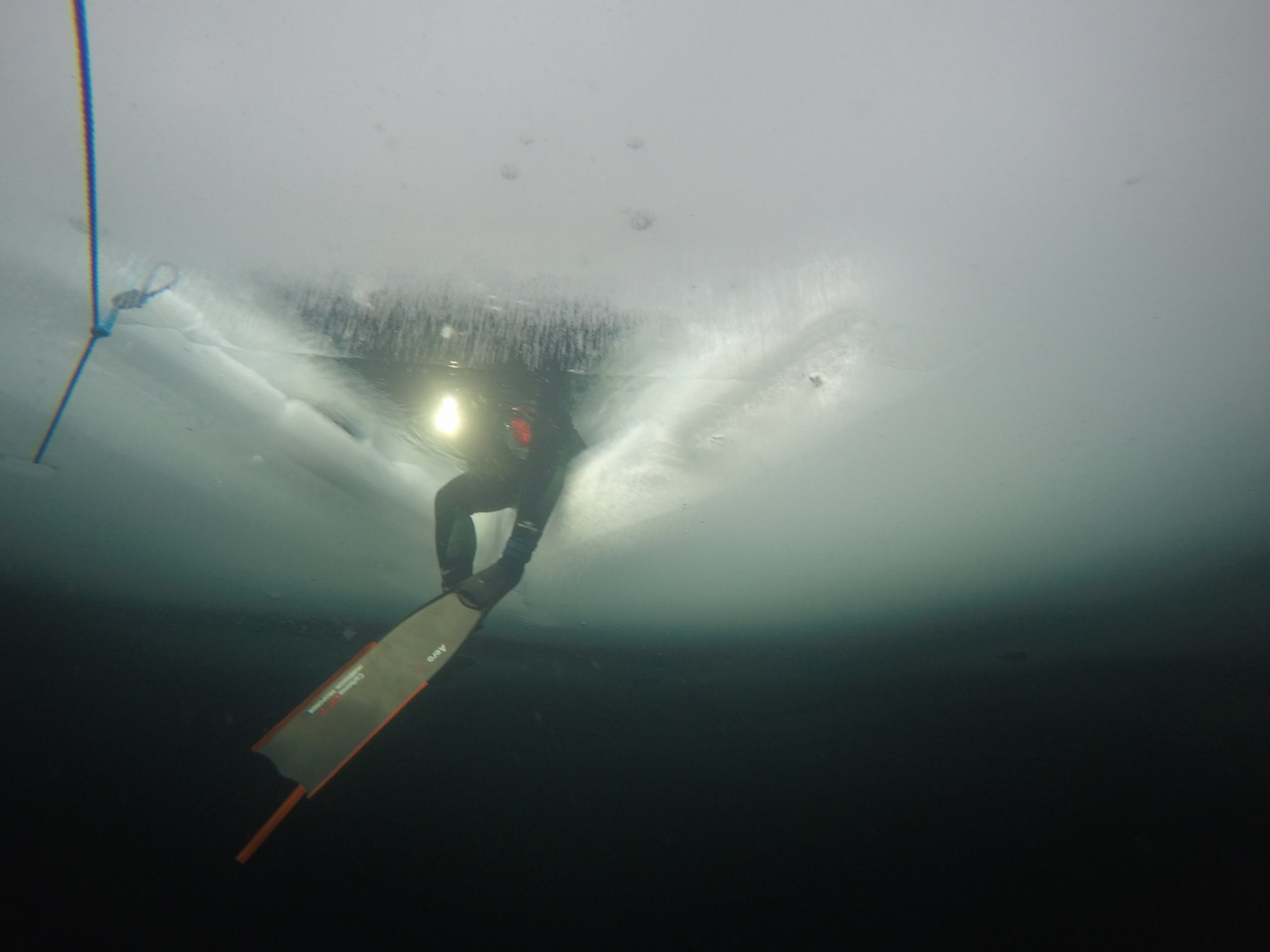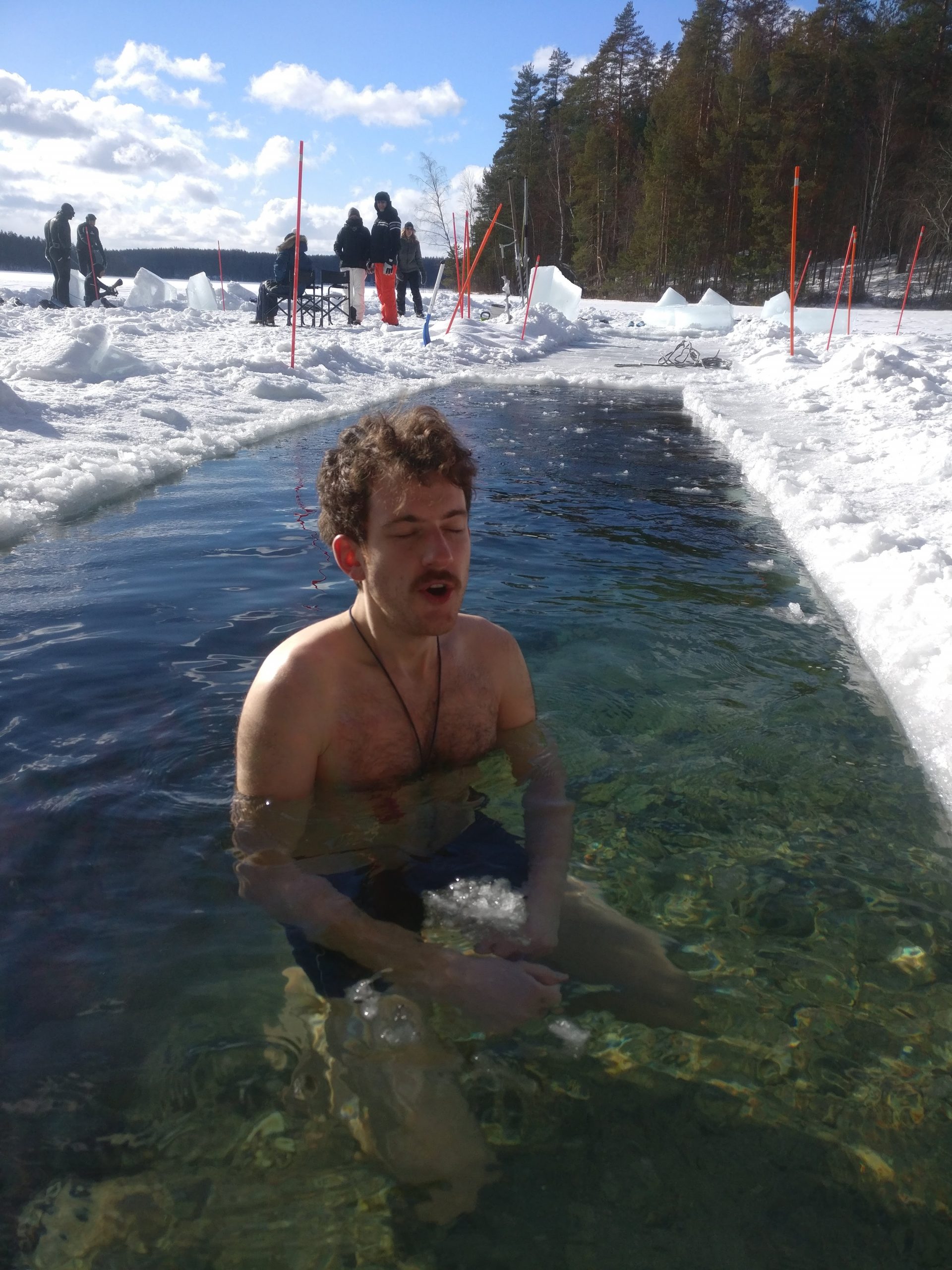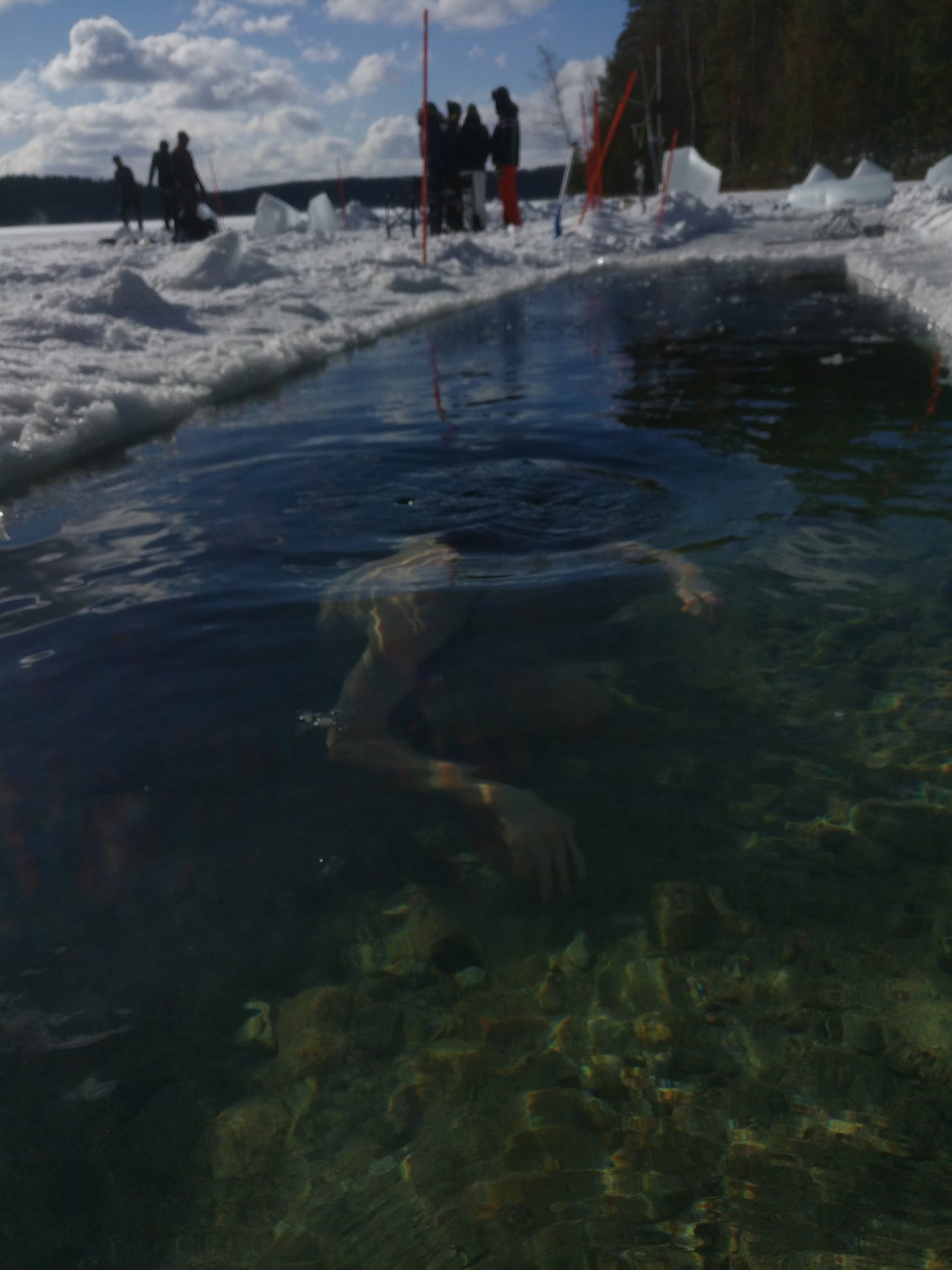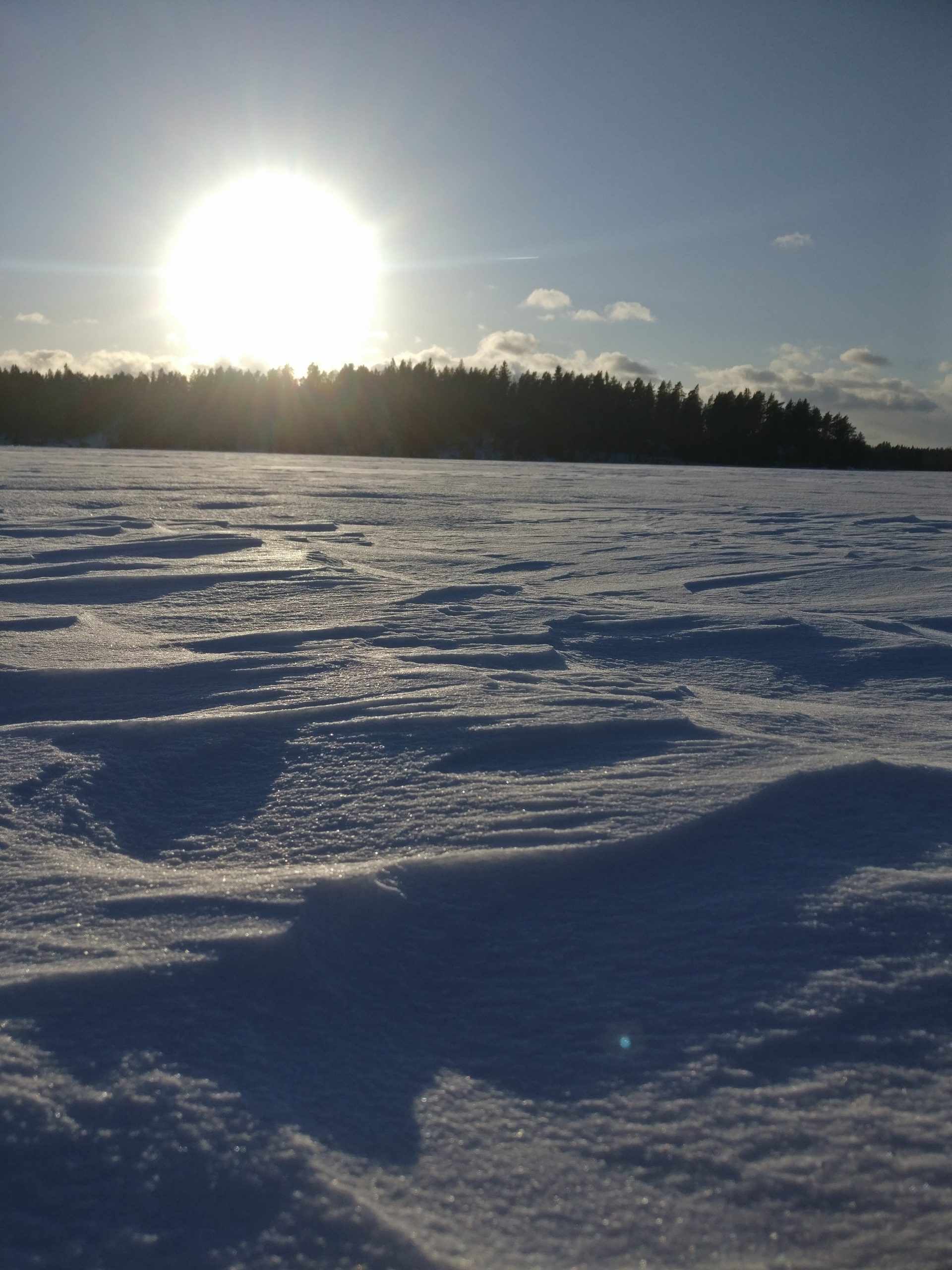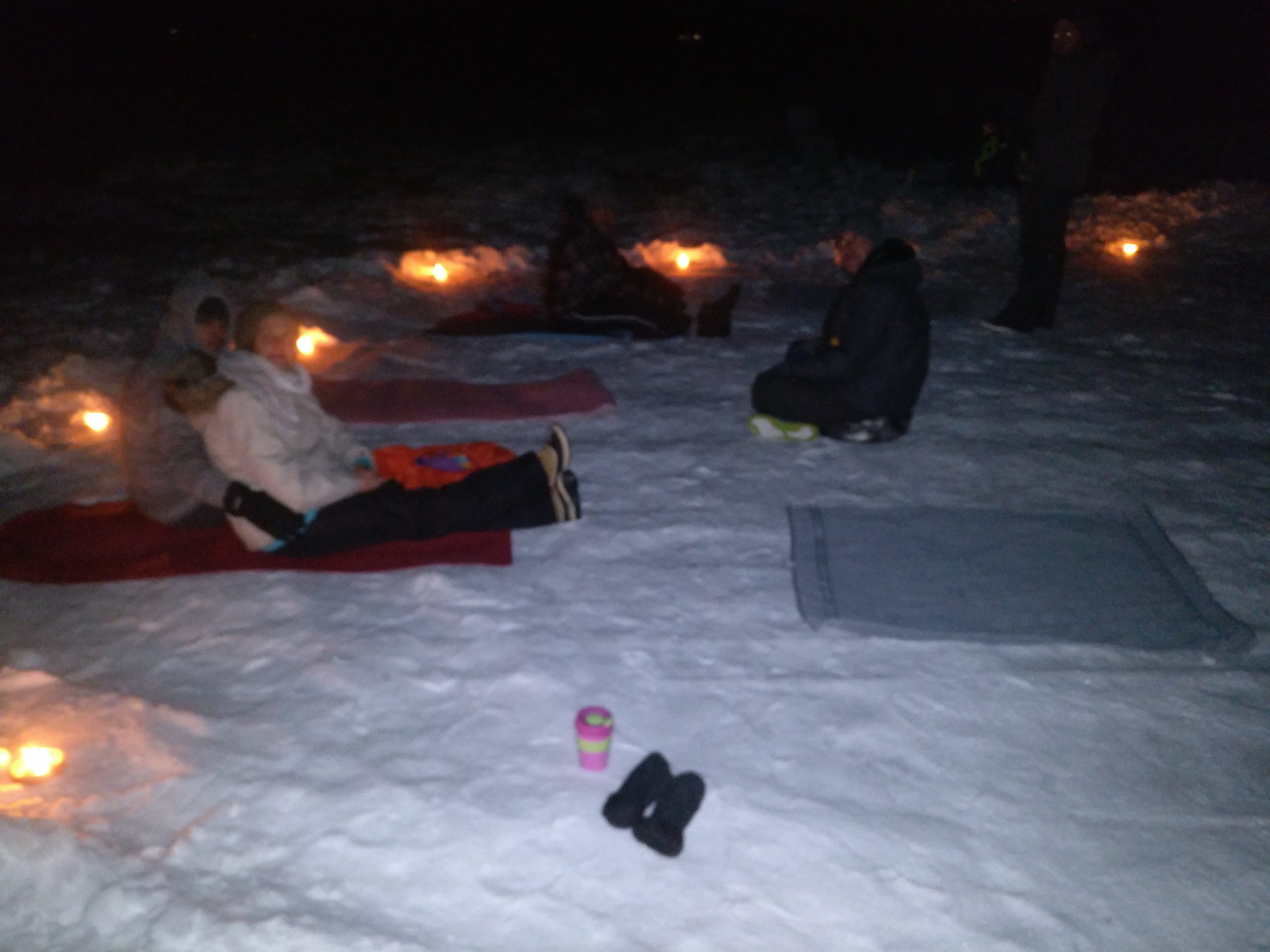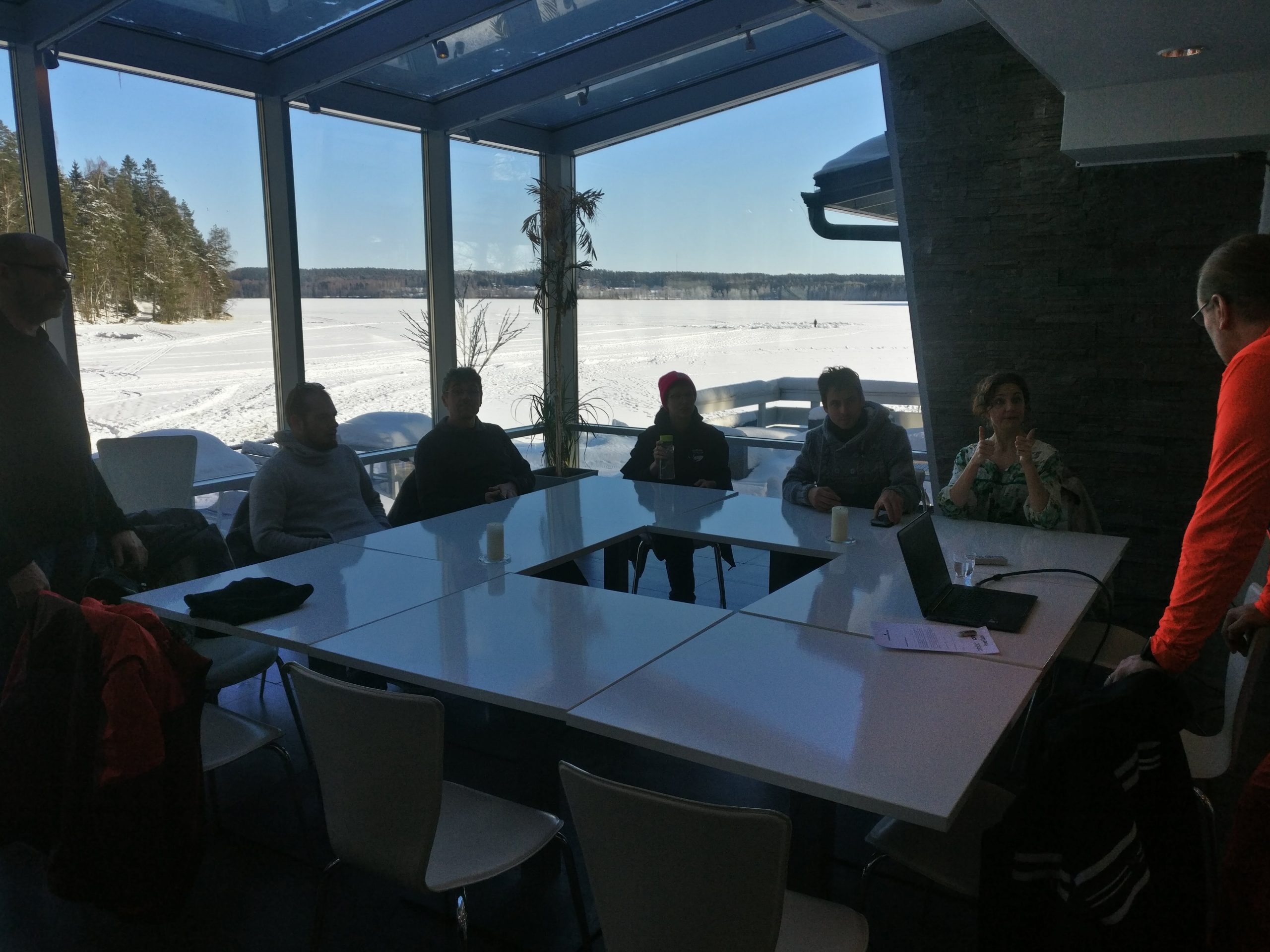I arrived in Finland for Päijänne on the rocks, a yearly under-the-ice diving event organized by Antero Joki, after a long day of travelling. In the national park is a beautiful frozen lake surrounded by forest and deep silence.
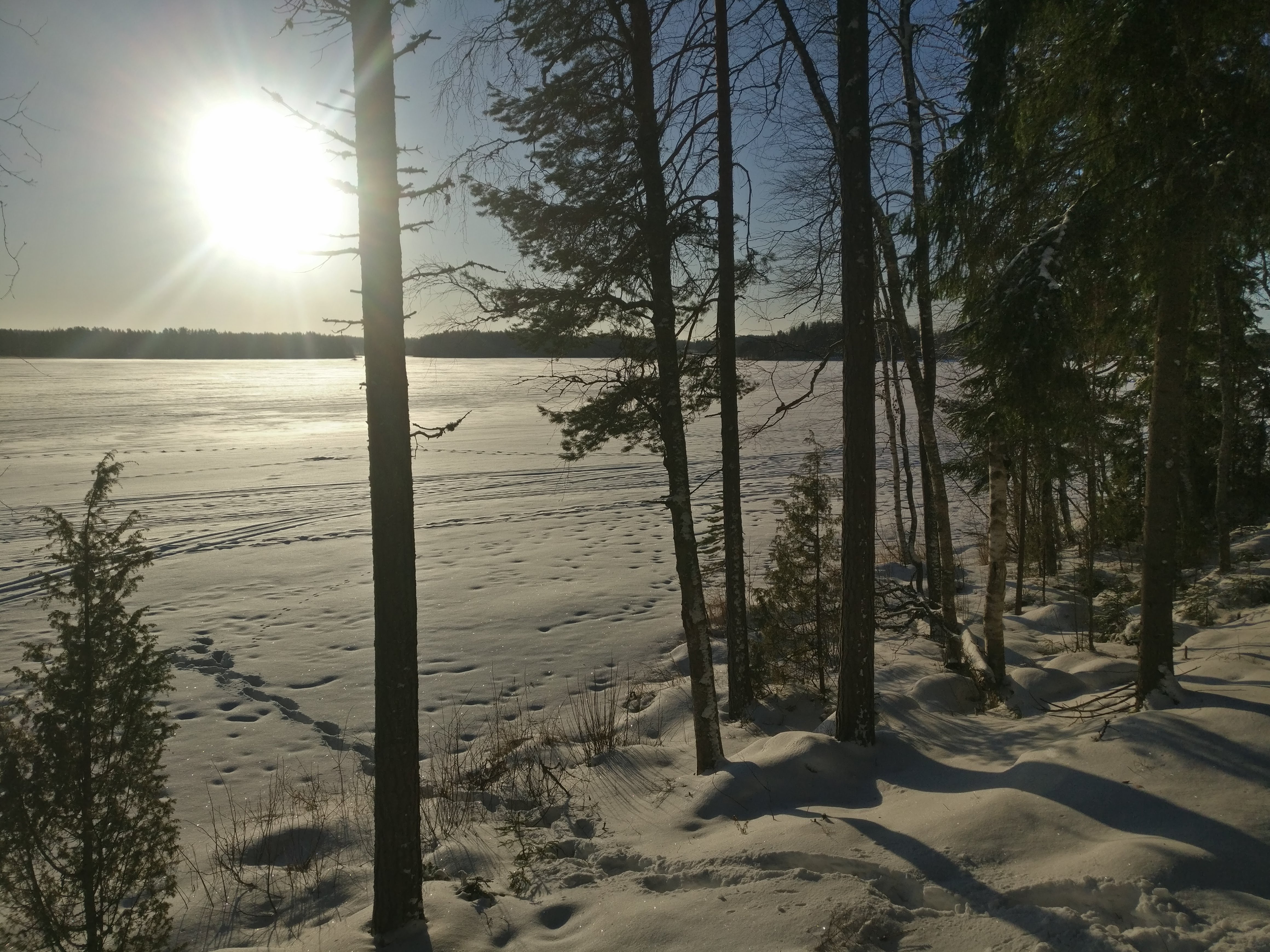
Sonnanen, Johanna Nordblad and Kiki Bosch
We started our first morning together with a short briefing by Antero before going to Sonnanen, a lake clearer and bluer than our red Päijänne, to meet with Johanna Nordblad (freediving world champion in DYN and record holder for distance under the ice without a suit with 50m) and her sister.
I had watched her videos from that lake many times – they were the inspiration for me to come dive under the ice in the first place, so that’s quite a way to start!
We spent some time digging the diving holes and cutting open a swimming pool for later training. Cutting the thick ice is a pretty physical activity:
[wpvideo Z9696BRK]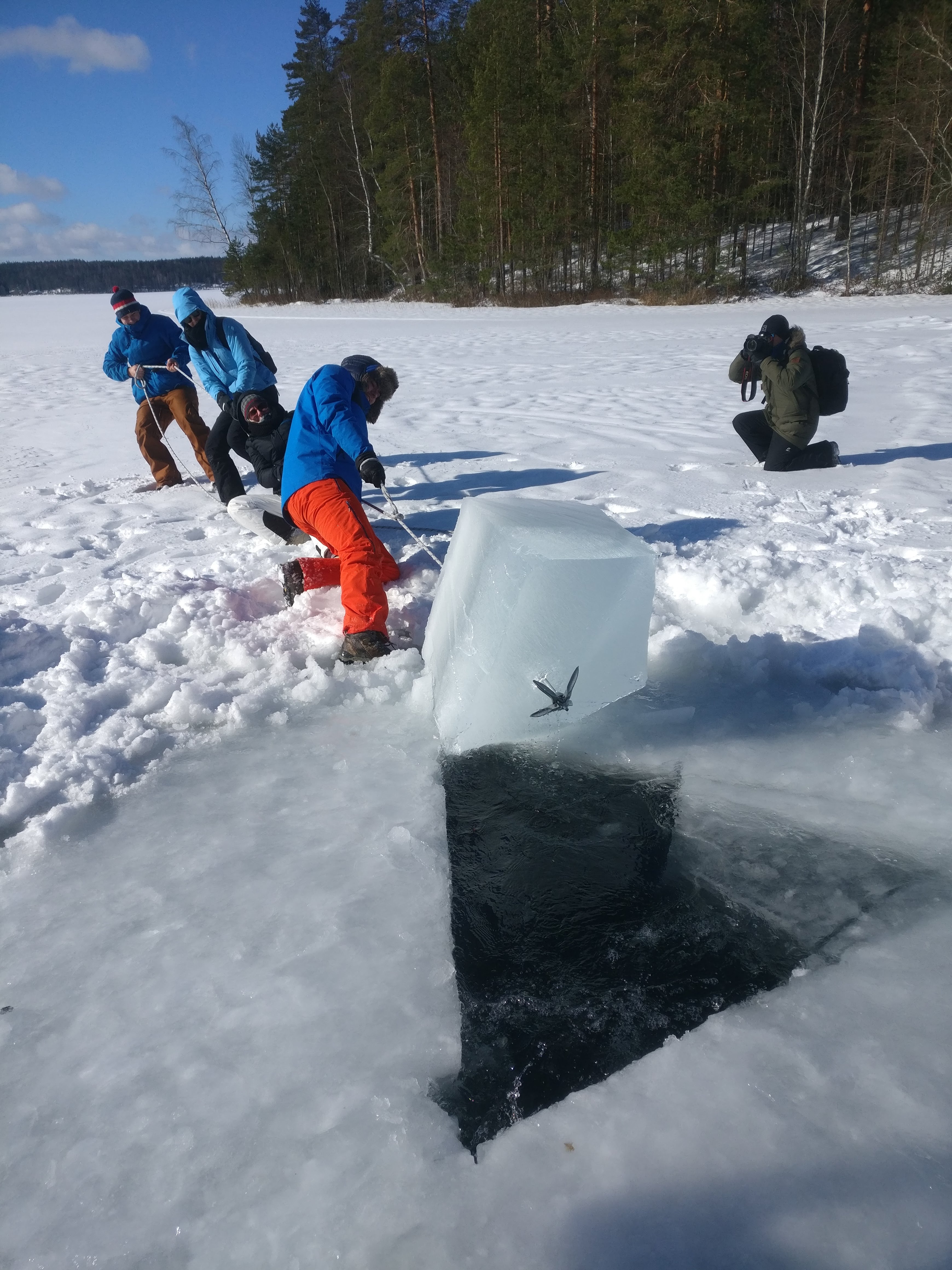
Water is around 1°C just under the ice and during our stay the air was between -7°C and -13°C. Many small things change when freediving in these conditions, which can throw you off at first.
A simple example: I tried to clean my mask by dipping it into the water as usual and it froze instantly when I took it out, making it foggy with ice. It’s alright if you know how to handle it: the water melts again when going underwater on your first dive after which you can empty it, giving you a nice clear mask.
Metal sticks to everything and if you leave the holes for too long you need to come check and re-open them – the ice will form again. Because I had a 7mm open-cell suit and we were diving at around 1m depth (neither the lungs nor the suit get compressed) I was quite buoyant even with 8kg on my weight-belt, so I was always pushing away the ice with my hands.
A far cry from the Filipino waters where I learned to freedive!
All of that made me very clumsy under water. However, even with a mask half-filled with freezing water, it’d be hard to not be amazed by the dark scenery under the ice. Diving upside down in that strange environnement really feels like being in a completely different world.
At one point one of our fellow freediver went without a wetsuit from one hole to another under the ice – which is something I had also always wanted to try.
She made it look very easy: her name is Kiki Bosch and as I discovered later she’s well known for evolving in the cold, I had already seen some of her work. So after discussing with her in the sauna by the lake (it seemed like half the buildings in Finland are saunas; my sample data might be biased), she was kind enough to coach me through a short swim in the pool we had just built.
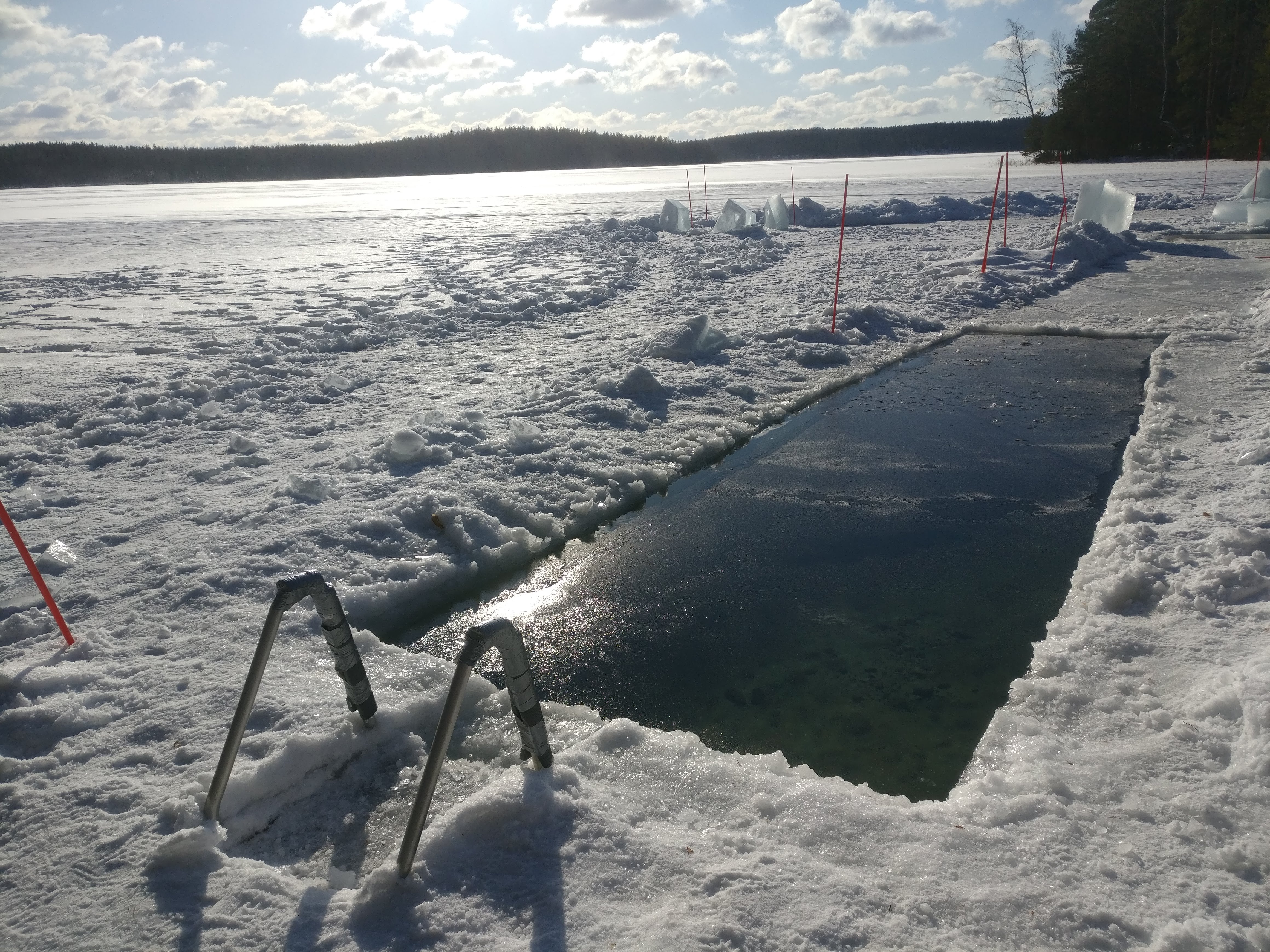
For me, the experience was definitely one of the highlights of the event. Entering the water is easy: I felt strong tingling everywhere from the extreme vasoconstriction but no cold for the first few seconds. The body then quickly goes into shock and I had to really focus on my breathing to keep control of it – all the air felt sucked out of me.
My body went into survival mode and really forced me into the moment; my mind was empty and very sharp, witnessing the new sensations without getting attached to them. It’s a great meditation tool!
I stayed a little more than a minute before I felt my body was starting to not respond any more so I got out – I’m guessing I just didn’t know what those strange new sensations were and could have made the immersion last longer.
Kiki says that after a few minutes you need to keep a very strong focus inward to stay heated and need a lot longer to recover your body heat. That all sounds extremely interesting and I’m very curious to experience that by myself.
Paijanne and night dive
We went back to the Paijanne lake where we had three lines set up (2x25m, 1x30m), which was longer than what we had at Johanna’s (~15m).
First dive in the darkness: very intense! Under the ice you have zero frame of reference and get lost extremely quickly (everything looks the same in all directions and you don’t see the holes if you’re more than 2-3m away).
Of course the darkness is exacerbated by the night, even if Antero and the orga team had put some colorful lights on the underwater paths.
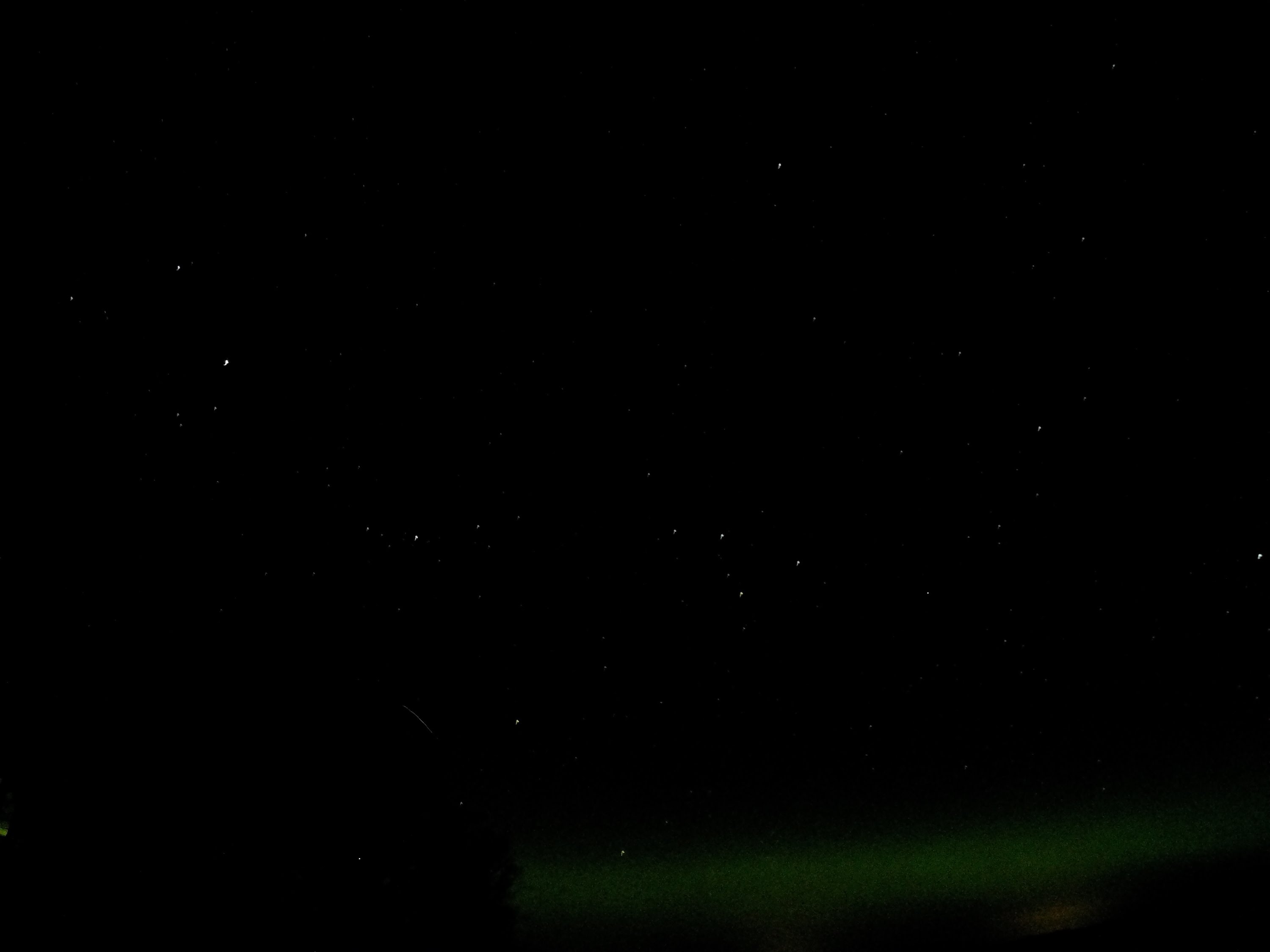
The dives are only 35-40 seconds but on the first one I was *not* relaxed, it felt too long and I saw my mind starting to race – « should I panic? ».
I’ve had this feeling appear during uncomfortable deep dives and it’s helpful for me to recognize when the question pops up: I’m pretty sure the answer is always no, so I relaxed my neck, gave up thinking about the hole and focused on the pleasant sensation of each kick.
Losing any external idea of where you are and when you can breathe definitely helps being focused on yourself and on what you are doing this exact second!
Paijanne by day
Even by day, the light seems to only go through the ice vertically instead of scattering everywhere, so you just have a luminous circle of a few meters around you and everything else is pitch black. Looking down you only see a black hole.
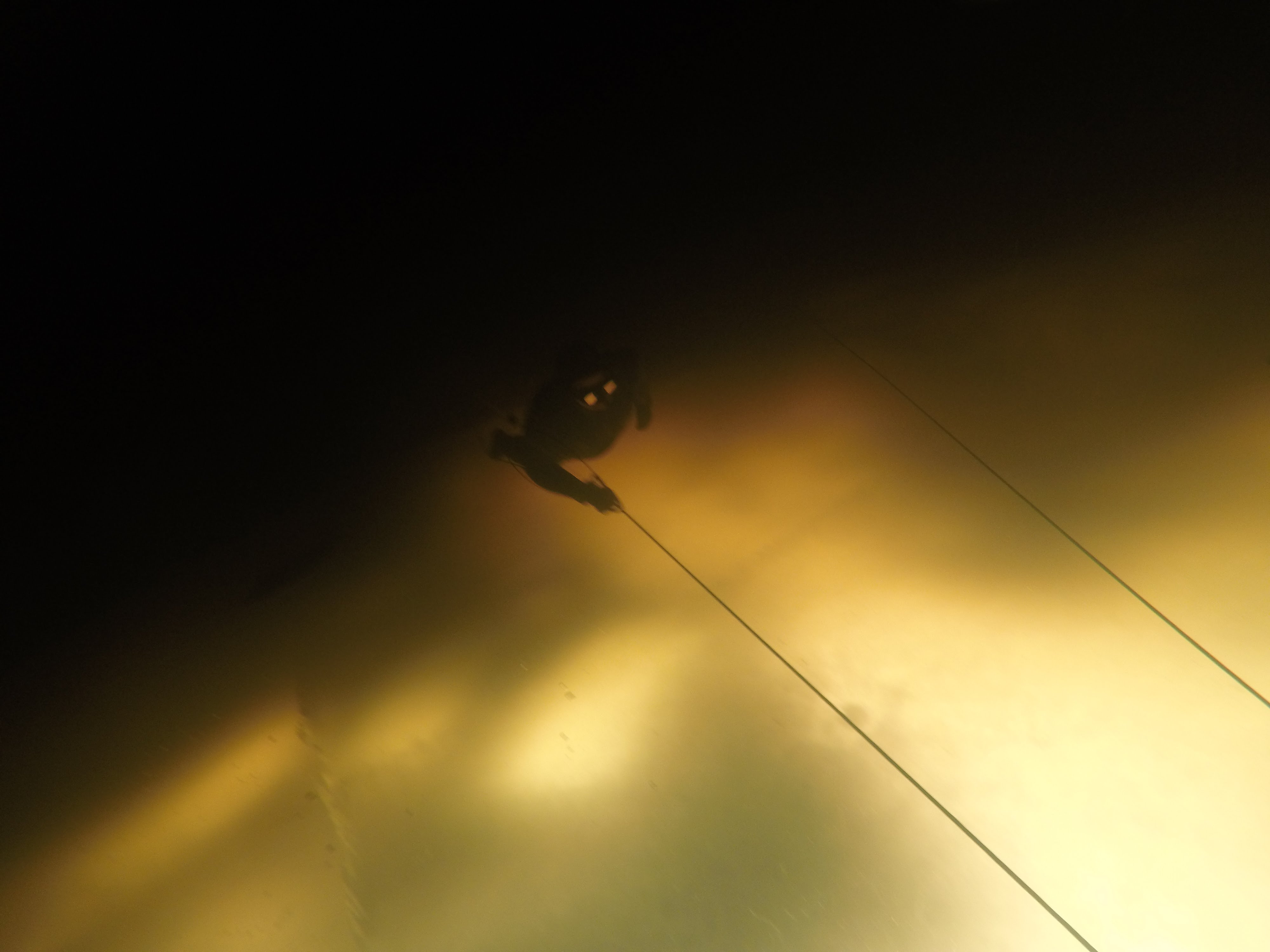
By the end of the three days I had started to become much more comfortable under the ice (still clumsy though!), I was beginning to enjoy caressing the frozen lake from below and doing longer distances…

Diving into the black hole…
… or running underwater!
Ending and take away
The event concluded on a heart opening talk by underwater and storytelling photographer Nanna Kreutzmann (you can check out her great work on instagram) followed by Miguel Lozano with another talk – « Secretos de un apneista » – on training, world record attempts and learning about restraint.
A few take away from this whole event:
- Exposure to cold seems a very interesting tool for showing clearly the inner working of the mind and learning to maintain a strong focus
- I only did a few longer dives towards the end and they were quite different from the short 25m ones, I definitely want to try that again (with a bit more weight to be closer to neutral)
- GoPro are very convenient but if I want to make really beautiful pictures in these conditions I need more than that (see any of the instagram linked for superb pics)
- Paijanne is an amazing setting to explore and dive in and the under ice world is mesmerizing
Very grateful to Antero and the organizing team for their hard work, Kiki for the cold experience, Johanna and her sister for sharing their lake, Geraldine and her French group for the meals and yoga on ice by -13°C.
Many thanks also to all the freedivers over there who really created an atmosphere of fun and pervading kindness, and made it such a nice experience!
